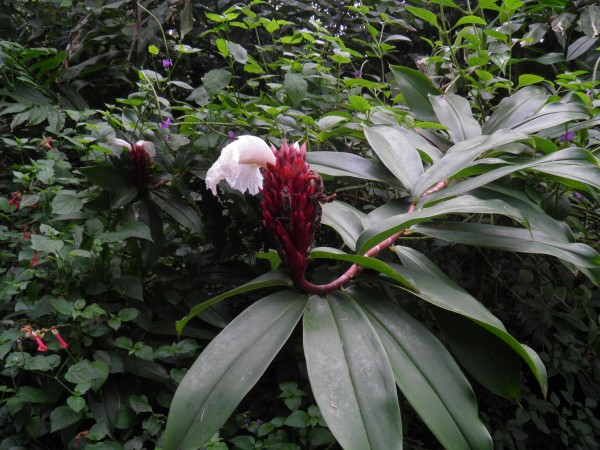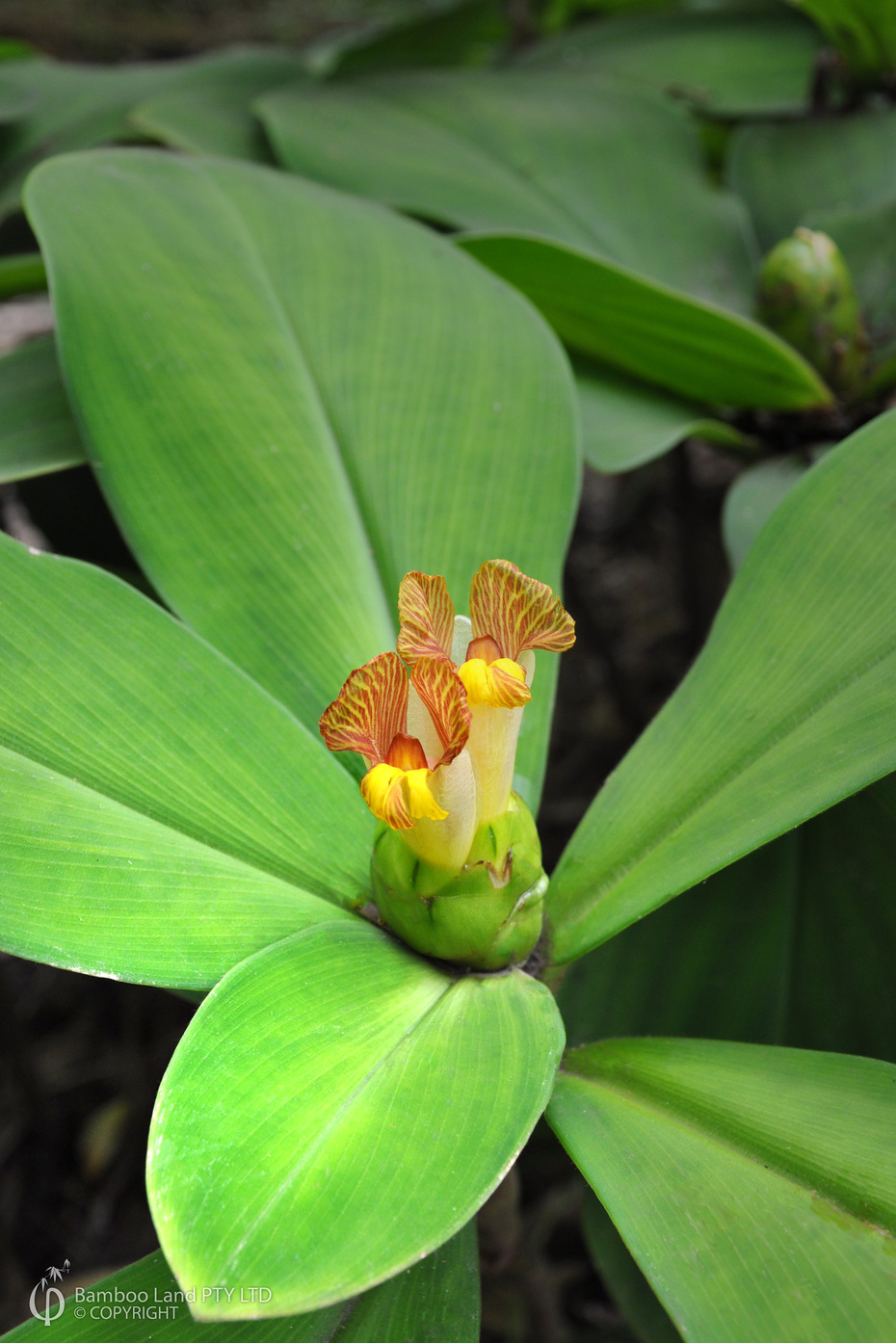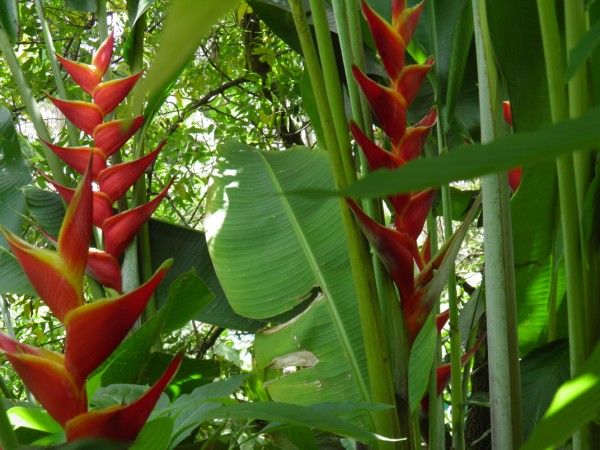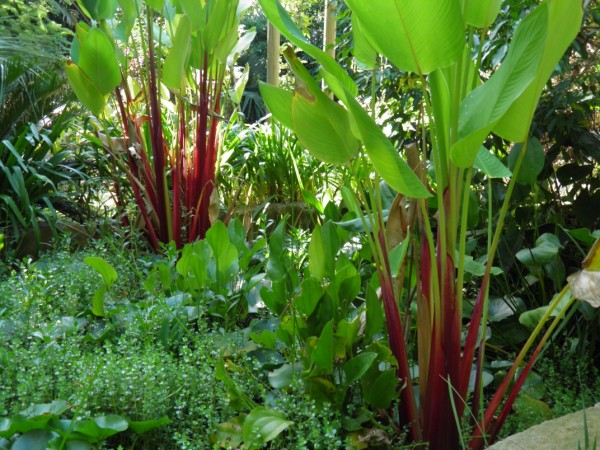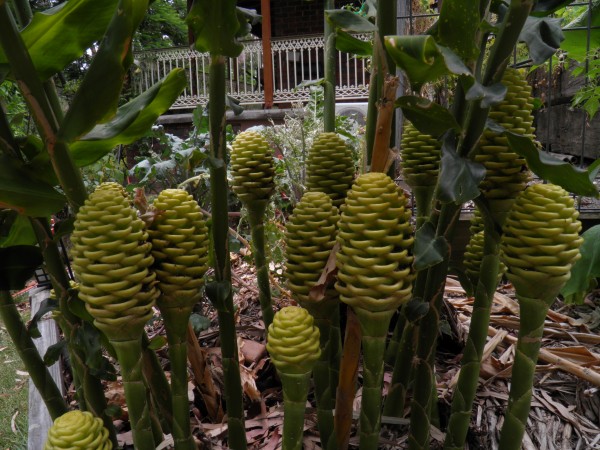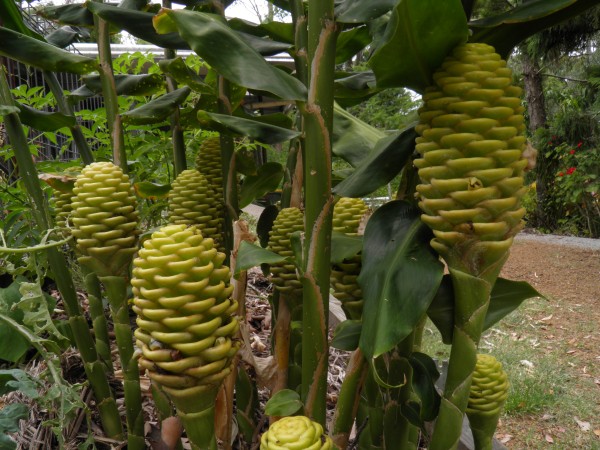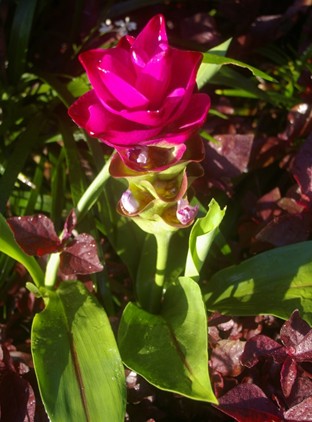

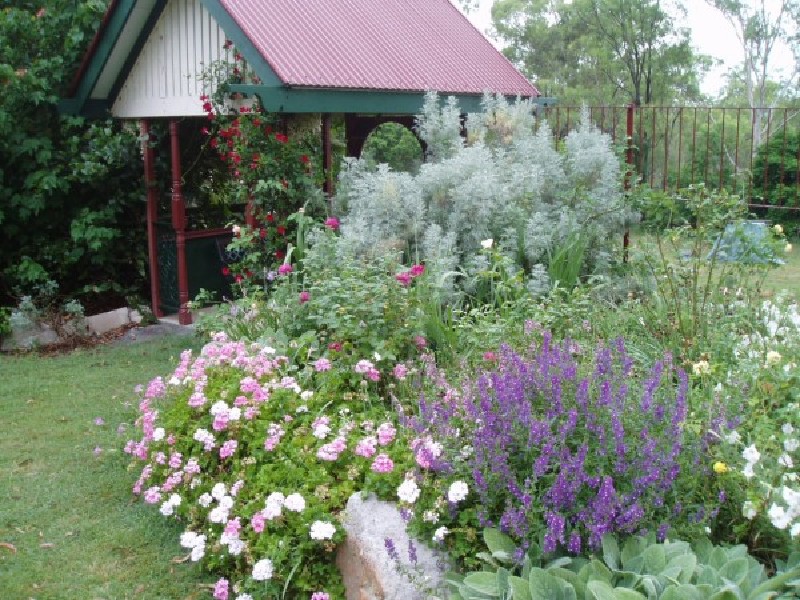
GINGERS
Ginger Growing Hints
ZINGIBER OFFICINALE
This is the common eating ginger which the roots are used as a spice in cooking. This plant is deciduous. After the foliage dies down in late Autumn the ginger rhizomes can be harvested and dried. It is best to let your ginger grow for at least one season before harvesting it.
Sow a portion of the rhizome in spring, either directly in the garden or in a pot. Grow in full sun. They will sprout when the soil warms up when night temperatures go above 10 degrees Celsius. Use sugar cane mulch to keep weeds at bay and keep moisture in. They like our wet summers and will put on enormous growth. It will form a clump as the rhizome grows.
In late autumn you will notice the foliage yellowing and once it has completely died down, the rhizomes can be harvested. Don’t forget to leave some for next year’s crop.
ALPINIA CAERULEA
This is our native ginger which hails from the Atherton Tableland. It is edible and is a good bush tucker plant. Alpinia Caerulea’s leaves are very attractive being green on one side and red on the reverse side. The fragrant white flowers are followed by blue berries. The new leaf shoots and berries have a mild ginger flavour and these can be used in cooking, or eaten fresh from the plant.
It also has a rhizome which is not used in cooking and this can be planted in shade where it will form a 2 metre tall clump. It likes water in summer, a dry spell in winter and will not tolerate frost. This native ginger does prefer a more shaded position, but still good light. They tend not to die down and prefer the soil to be moist but not wet and well mulched.
ZINGIBER SPECTABILE
This one is not edible but is a charming addition to the garden. The inflorescences are about knee high and look like bee hives. The foliage is tall, about 2 meters high, but to see the beehives you need to place them at the front of the garden to see them. They come in various colours; yellow, red, pink and last a long time. They are tropical, although they do not die completely back.
.
COSTUS is a very close relative of the gingers and usually have their flowers at the top of the stalks, which grow to about a metre. They differ to the gingers in that their stalks spiral at the top. Costus barbatus or Red tower ginger is Red with yellow flowers and keeps its cones for most of the spring and summer. Mulch them well to keep the soil moist as they do expect a wet summer. Costus Malortieanus is a lovely smaller Costus but does not like our cold winter so it needs to be kept in a sheltered spot where it does not get below 10 deg Celsius in winter. Like all Costus they do prefer a little more shade and are happy with morning sun.
CURCUMA alismatifolia or Siam tulip, has flower bracts, resembling a tulip. They come in various colours from white to hot pink. The flowers are insignificant and are in pockets below the colourful bracts.
Curcuma prefers moist, well-drained soil that has a lot of organic matter, such as compost in it. If your soil has a high sand or clay content, add organic matter before planting for optimal performance from your plant. Water curcuma regularly in summer and drier in winter.
CURCUMA longa is the edible turmeric that is used in Asian cooking and gives the dish a yellow look. The leaves have a spicy flavour and can be used to wrap fish before steaming, or shredded into stir fries, salads and rice. Its benefits as a health product has long been sung and the rhizomes are dried and can be bought as a powder. Turmeric contains curcumin, which is reported to have multiple health benefits, including anti-inflammatory properties and improving heart health.
I
t is easy to grow here in the sub-tropics. The tall 1 metre leaves die back in late autumn when the rhizomes can be harvested. It is best grown in a large container or garden bed that will limit its growth as it can spread in ideal conditions via the rhizomes.
For good growing conditions; It enjoys mulching and organic matter added to the soil. Plenty of watering in summer and drier in winter during dormancy; which is perfect in our climate. A position in full sun in the morning and shade in the afternoon is ideal
This is the common eating ginger which the roots are used as a spice in cooking. This plant is deciduous. After the foliage dies down in late Autumn the ginger rhizomes can be harvested and dried. It is best to let your ginger grow for at least one season before harvesting it.
Sow a portion of the rhizome in spring, either directly in the garden or in a pot. Grow in full sun. They will sprout when the soil warms up when night temperatures go above 10 degrees Celsius. Use sugar cane mulch to keep weeds at bay and keep moisture in. They like our wet summers and will put on enormous growth. It will form a clump as the rhizome grows.
In late autumn you will notice the foliage yellowing and once it has completely died down, the rhizomes can be harvested. Don’t forget to leave some for next year’s crop.
ALPINIA CAERULEA
This is our native ginger which hails from the Atherton Tableland. It is edible and is a good bush tucker plant. Alpinia Caerulea’s leaves are very attractive being green on one side and red on the reverse side. The fragrant white flowers are followed by blue berries. The new leaf shoots and berries have a mild ginger flavour and these can be used in cooking, or eaten fresh from the plant.
It also has a rhizome which is not used in cooking and this can be planted in shade where it will form a 2 metre tall clump. It likes water in summer, a dry spell in winter and will not tolerate frost. This native ginger does prefer a more shaded position, but still good light. They tend not to die down and prefer the soil to be moist but not wet and well mulched.
ZINGIBER SPECTABILE
This one is not edible but is a charming addition to the garden. The inflorescences are about knee high and look like bee hives. The foliage is tall, about 2 meters high, but to see the beehives you need to place them at the front of the garden to see them. They come in various colours; yellow, red, pink and last a long time. They are tropical, although they do not die completely back.
.
COSTUS is a very close relative of the gingers and usually have their flowers at the top of the stalks, which grow to about a metre. They differ to the gingers in that their stalks spiral at the top. Costus barbatus or Red tower ginger is Red with yellow flowers and keeps its cones for most of the spring and summer. Mulch them well to keep the soil moist as they do expect a wet summer. Costus Malortieanus is a lovely smaller Costus but does not like our cold winter so it needs to be kept in a sheltered spot where it does not get below 10 deg Celsius in winter. Like all Costus they do prefer a little more shade and are happy with morning sun.
CURCUMA alismatifolia or Siam tulip, has flower bracts, resembling a tulip. They come in various colours from white to hot pink. The flowers are insignificant and are in pockets below the colourful bracts.
Curcuma prefers moist, well-drained soil that has a lot of organic matter, such as compost in it. If your soil has a high sand or clay content, add organic matter before planting for optimal performance from your plant. Water curcuma regularly in summer and drier in winter.
CURCUMA longa is the edible turmeric that is used in Asian cooking and gives the dish a yellow look. The leaves have a spicy flavour and can be used to wrap fish before steaming, or shredded into stir fries, salads and rice. Its benefits as a health product has long been sung and the rhizomes are dried and can be bought as a powder. Turmeric contains curcumin, which is reported to have multiple health benefits, including anti-inflammatory properties and improving heart health.
I
t is easy to grow here in the sub-tropics. The tall 1 metre leaves die back in late autumn when the rhizomes can be harvested. It is best grown in a large container or garden bed that will limit its growth as it can spread in ideal conditions via the rhizomes.
For good growing conditions; It enjoys mulching and organic matter added to the soil. Plenty of watering in summer and drier in winter during dormancy; which is perfect in our climate. A position in full sun in the morning and shade in the afternoon is ideal
| Common Name | Botanical Name |
|
Native ginger Galangal Red ginger Shell ginger Crepe ginger Peacock ginger Red tower Ginger Costus Nicaragua Spiral ginger Indian Head Ginger Siam tulip Turmeric Blue Ginger Red Torch ginger Pride of Burma Hedychium Red Christmas Lobster Claw Golden torch Parrots beak Red Stemmed Flag Mexican Flag Beehive Ginger |
Alpinia caerulea Alpinia galanga Alpinia purpurata Alpinia zerumbit Cheilocostus speciosus Cornukaempheria aurantiflora Costus barbatus Costus malortieanus Costus speciosus Costus woodsonii Curcuma alismatifolia Curcuma longa Dichorisandra thrysiflora Etlingera elatior Globba winitii Hedychium sp Heliconia angusta Heliconia bihai Heliconia psittacorum Heliconia rostrata Thalia geniculata Tradescantia zanonia Zingiber spectabile |
Let nature be your guide
























